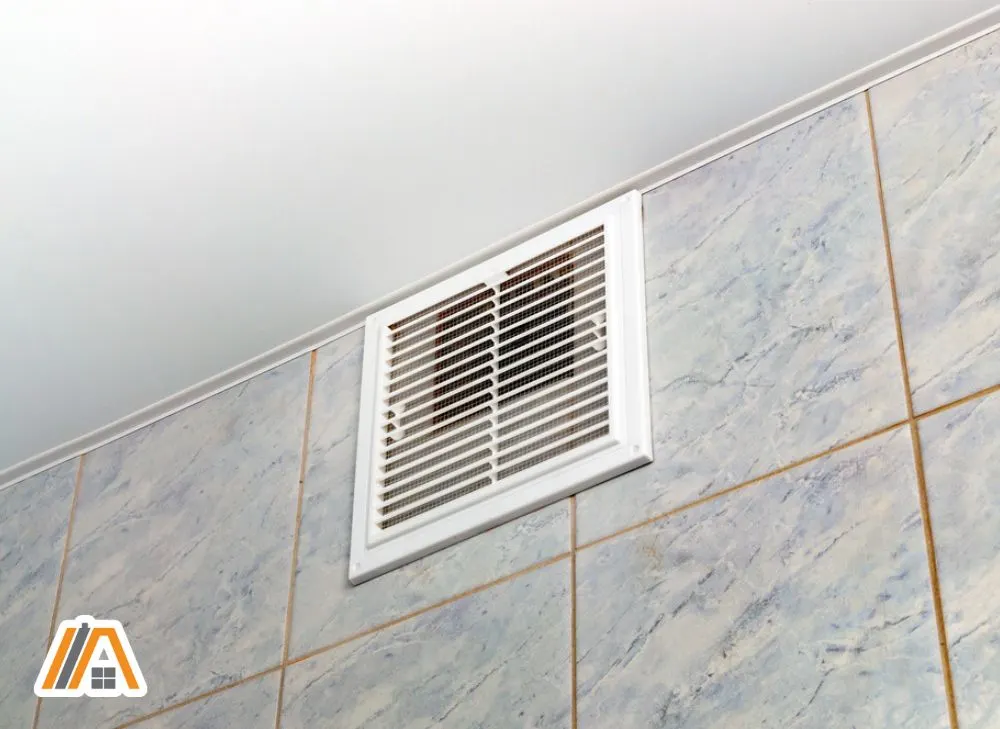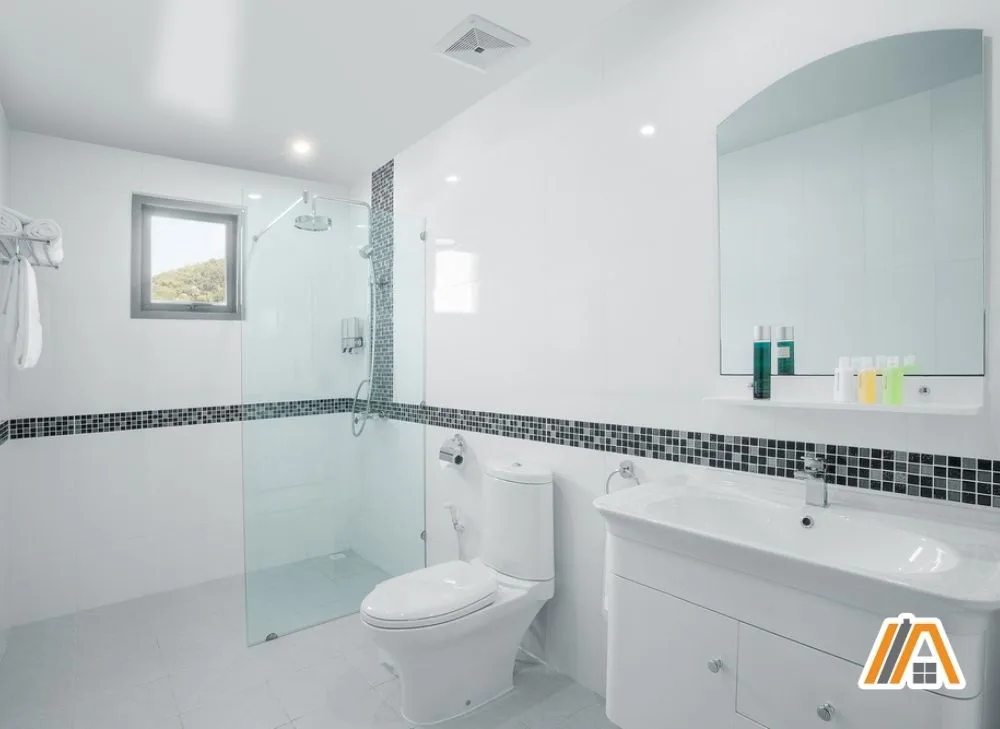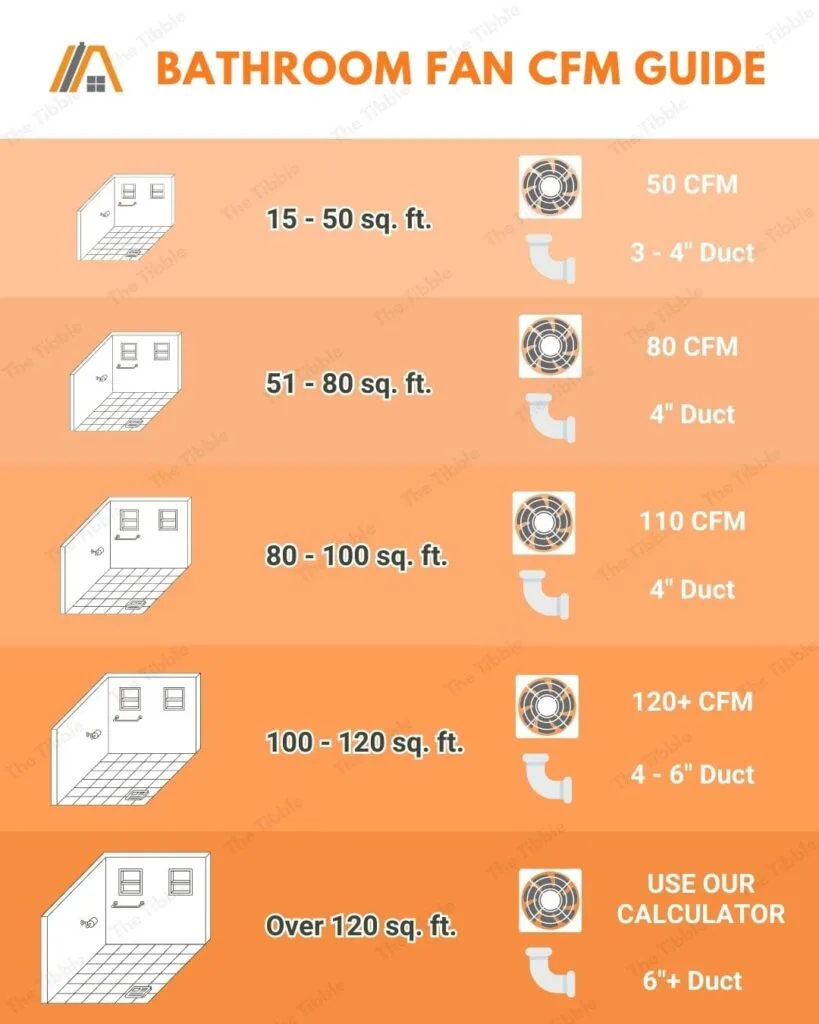Most bathroom fans are installed in the ceiling, a fact that has two main reasons behind it. First, steam naturally rises to the ceiling, so it is most effectively cleared from here. Second, many bathrooms vent through the roof, so the most direct ducting route starts at the ceiling. But wall venting is also an option.
You need to choose the fan location that is going to allow the fan and its ducting to work most effectively. Often, this is the ceiling, but sometimes it is the wall venting. When the wall is the ideal location, you still have some decisions to make, e.g., where the vent terminates and where on the wall the fan is placed.

In general, bathroom exhaust fans can be installed vertically/on a wall. There are two types of wall installation: through-wall and wall-insert. Through-wall fans have no ducting but require an external wall to be present. Wall-insert fans can be installed anywhere in the house but require ducting.
Bathroom Exhaust Fans That Can Be Installed on Walls
The major disadvantage to a vertically installed bathroom exhaust fan is that steam rises to the ceiling, so a fan on the wall is going to pull less steam out at a time. The same amount of air will be exhausted as a ceiling exhaust fan, but more of this air will be “fresh” or not steamy.
To minimize this, it is advised that exhaust fans installed in walls be placed as close to the ceiling as possible.

Another downside to wall fans is that you cannot opt for models with lights and other features.
Bathroom exhaust fans that can be installed vertically on walls take one of two forms.
Through-Wall Fans
The first is a fan that goes right through the wall to vent out of the side of the house with no more ducting than a short cylinder that spans the thickness of the walling materials.
- Easy-Install Ventilation Fan: Through-the-wall mounting provides ventilation, works with 8” ducts
- Quiet Fan and Motor: Uses a propeller fan driven by a capacitor motor that draws clean air in
- Clean Air Ventilation Fan: Designed to improve air quality and eliminate humidity and pollutants
- Guaranteed to Last: Panasonic ventilation fans use less energy to move larger volumes of air
- VERSITILE: Ventilation fan eliminates heat, humidity and unwanted smells inside the garage, kitchen, laundry room or rec room
- IN-WALL INSTALLATION: Requires cutting a hole in the wall and wiring to a switch; has a built-in exterior wall cap/vent, so no ducting needed for install; motor assembly offers a fast and easy...
- HIGH QUALITY, EFFICIENT OPERATION: Operates at 70 CFM to efficiently ventilate rooms up to 65 sq. ft.; use for spot ventilation in a garage near a work bench, car, yard equipment or other spaces...
- FEATURES: Galvanized steel housing for superior protection against the elements; built-in bird screen
Last update on 2024-03-28 / Affiliate links / Images from Amazon Product Advertising API
These are not a very common option for many reasons:
- They are often quite loud fans
- The wall must be an exterior wall.
- It is much harder to go through the whole wall as opposed to just the drywall (as with the second option for vertical fan installation, which will be discussed shortly).
- There are fewer options for this type of bathroom exhaust fan.
On top of that, there are some downsides to venting straight out through the wall and the side of the house, including significant backdrafting when the wind is blowing against the wall and ensuring that the wall vent is far enough away from exterior doors and windows to be code compliant.
Wall-Insert Fans
The second type of bathroom exhaust fan that can be installed in the wall is a wall-insert fan, which is like the normal ceiling-insert fans but is installed vertically into the drywalling instead of horizontally into the ceiling boards.
Ducting is still required for these fans and the choices for where to terminate the ductwork are the same as for ceiling-insert fans, i.e., through the wall, roof, or soffit.
Often, the ducting route taken from the wall is very similar to that which would be laid for a ceiling-insert fan. In such cases, you have to consider if there is any reason not to rather go with the ceiling installation.
For example, you may choose the wall-insert option if the space above the ceiling in the bathroom is already crowded or perhaps you have a small bathroom and a fan alongside the light fixture would make the ceiling look crowded.
You may even have vaulted ceilings in the bathroom, which would potentially make the ceiling too far away from the shower to be effective and/or, there may not be enough room between the ceiling and the roof to accommodate ducting.
Of the vertically installed bathroom fans, these are the most common. They are also quieter on the whole and more readily available.
The ready availability relies partly on the fact that many (but not all) insert exhaust fans can be used for both the ceiling and the wall.
However, exhaust fans with lights or some form of a heating function should not be mounted on a wall.
It would be best if you double-checked before purchasing if it is possible to mount the fan you have chosen on a wall. The information would be available in the manual or from the people in the manufacturer’s customer care service.
There are pros and cons to both wall- and ceiling-mounted bathroom fans.
Should the Wall Fan Be in the Shower Cubicle?
While the goal of an exhaust fan is to be as close to the source of steam as possible, putting it on the wall in your shower cubicle is going to introduce a whole range of issues or, at least, additional considerations.
Placing the fan so near water means that you have to introduce GFCI to the wiring and you have to find a fan that is rated for this level of potential water exposure.
Additionally, when you have the fan in the shower, the fan will be pulling heat out of the shower faster and the moving air will feel cold against your wet skin.
Read my dedicated article for more information on bathroom fans in showers.
Where is the Best Location for a Bathroom Fan?
The best place for a bathroom fan is about a foot away from the shower and between the shower and the bathroom door.

This usually means that the ideal spot of the exhaust fan is somewhere on the ceiling, and not on the wall, meaning that wall installation is not the best option in this regard.
On the wall, it will either be too far from the shower or the shower will block the path between the door and the fan, impeding airflow.
Additionally, you want to plan your ductwork ahead while looking for the best place for your bathroom fan to go. You want the ducts to have the shortest, most direct route to the exterior of the home as possible. Whether it’s a roof vent or a wall vent, you want the exhaust fan to be within 6 feet of the exterior vent, if possible, to help avoid leaks and condensation build-up in the ducts.
You should also not put the fan close to an area in the bathroom that air can get into the room. For example, you shouldn’t put your exhaust fan close to a window or a door. You should also not have the vent let out the exhaust into the attic, it needs to be expelled outside of the home.
You can read my guide on how bathroom fans should be vented if you wish to learn more.
While looking for the perfect spot to install an exhaust fan, you need to ensure that you are not allowing there to be another problem elsewhere. The whole point of the exhaust fan is to avoid moisture build-up because it is much easier and less expensive to do preventative measures than it is to have to fix something after the mistake has already been made.
What Else Is Important When Installing a Bathroom Fan
While positioning the fan is important, there are other factors that should be taken into account when installing a bathroom fan.
- Remember to pull a permit. Or, if you hire someone to install the fan, make sure they do it (in most cases, contractors will pull permits).

Conclusion
Proper installation of bathroom exhaust fans is the best way to ensure humidity control and avoid negative outcomes, like mold growth, deteriorating finishes, and rotting materials.
Bathroom fans can be installed on walls and can go straight through the whole wall or be inserted into the drywall and connected to the outside via a ducting system.
Wall installation is the best option in some cases, but more often, ceiling installation is preferable.



